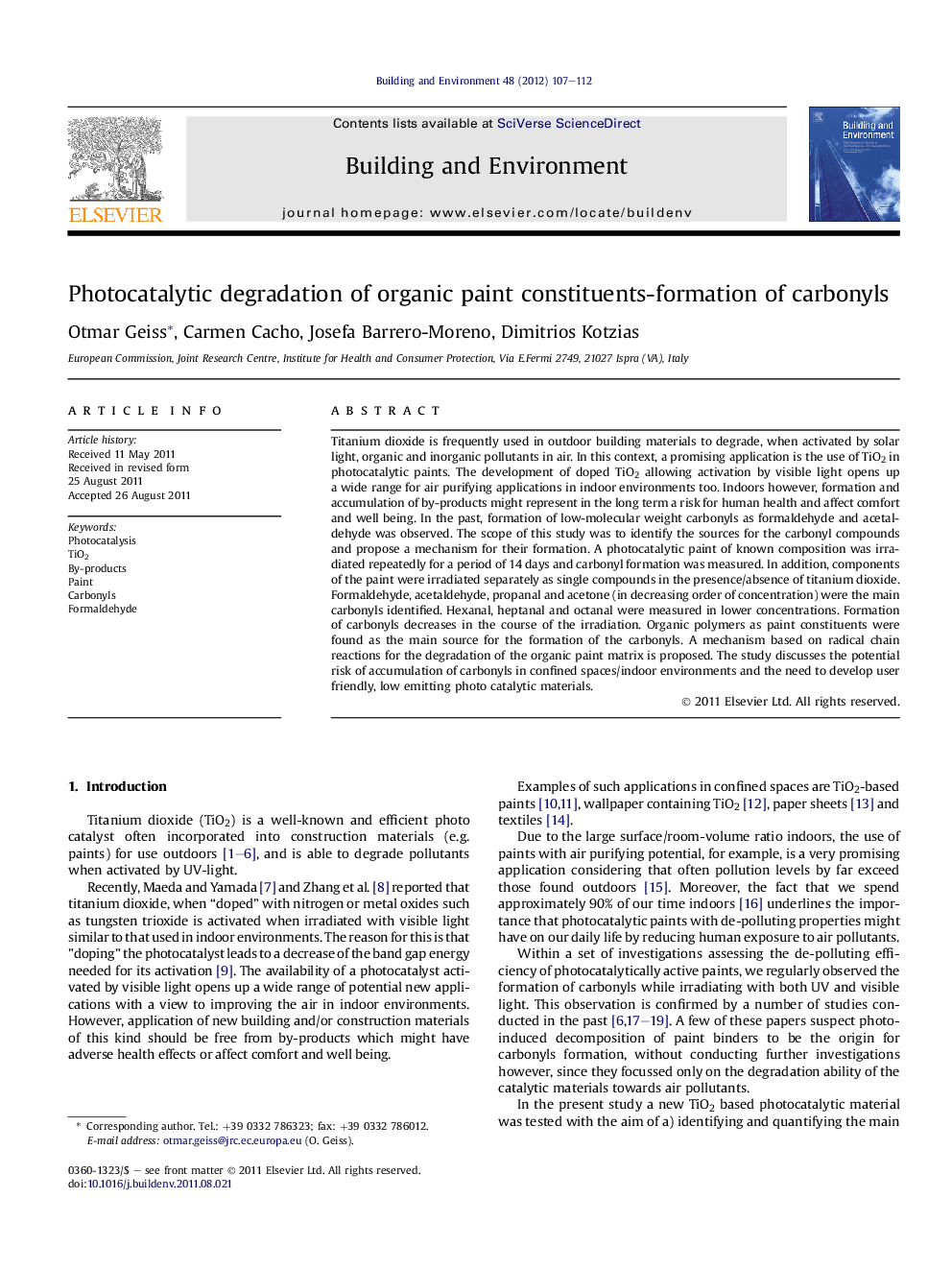| Article ID | Journal | Published Year | Pages | File Type |
|---|---|---|---|---|
| 248798 | Building and Environment | 2012 | 6 Pages |
Titanium dioxide is frequently used in outdoor building materials to degrade, when activated by solar light, organic and inorganic pollutants in air. In this context, a promising application is the use of TiO2 in photocatalytic paints. The development of doped TiO2 allowing activation by visible light opens up a wide range for air purifying applications in indoor environments too. Indoors however, formation and accumulation of by-products might represent in the long term a risk for human health and affect comfort and well being. In the past, formation of low-molecular weight carbonyls as formaldehyde and acetaldehyde was observed. The scope of this study was to identify the sources for the carbonyl compounds and propose a mechanism for their formation. A photocatalytic paint of known composition was irradiated repeatedly for a period of 14 days and carbonyl formation was measured. In addition, components of the paint were irradiated separately as single compounds in the presence/absence of titanium dioxide. Formaldehyde, acetaldehyde, propanal and acetone (in decreasing order of concentration) were the main carbonyls identified. Hexanal, heptanal and octanal were measured in lower concentrations. Formation of carbonyls decreases in the course of the irradiation. Organic polymers as paint constituents were found as the main source for the formation of the carbonyls. A mechanism based on radical chain reactions for the degradation of the organic paint matrix is proposed. The study discusses the potential risk of accumulation of carbonyls in confined spaces/indoor environments and the need to develop user friendly, low emitting photo catalytic materials.
► We irradiate a photocatalytic paint of known composition. ► We observe emissions of low molecular carbonyls as formaldehyde and acetaldehyde. ► Organic polymer are identified as main sources by irradiation of paint components. ► We propose a radical chain reaction based mechanism for their degradation.
